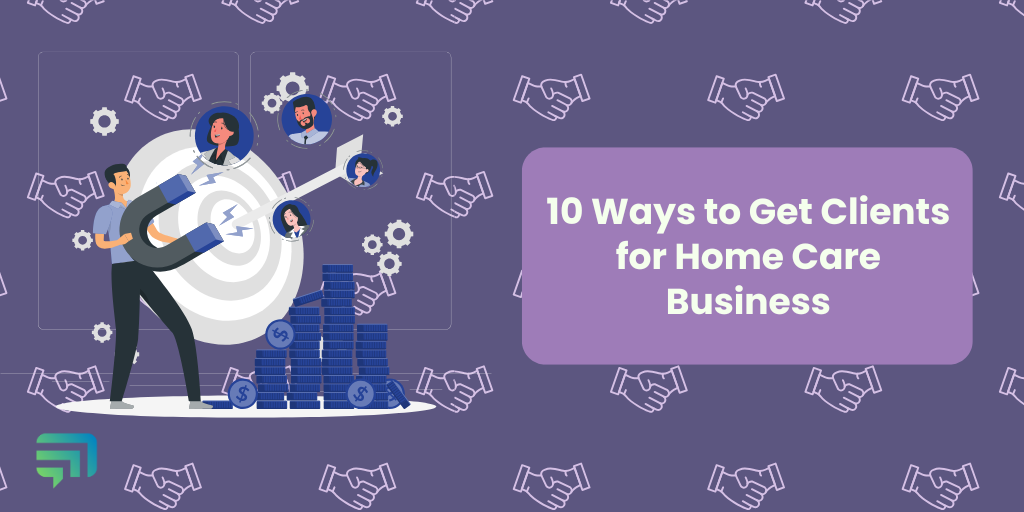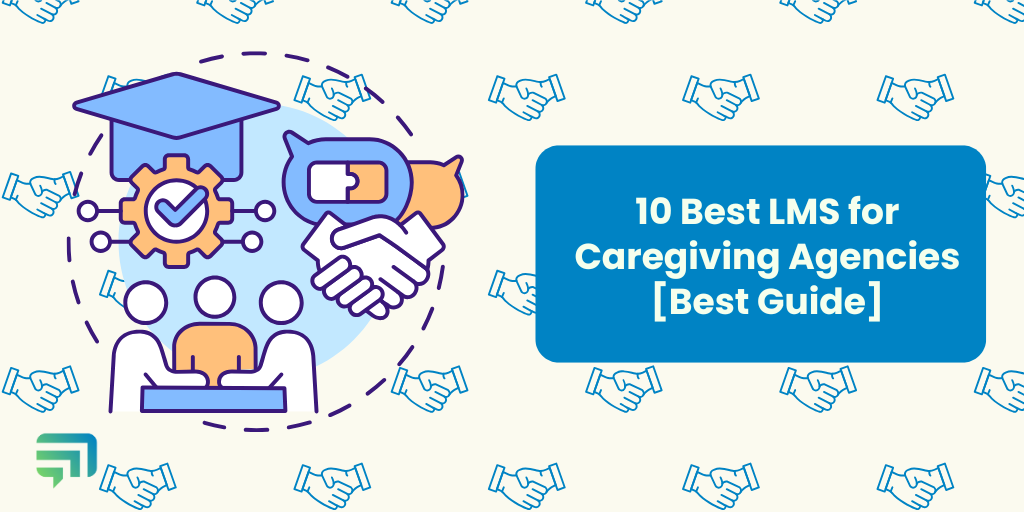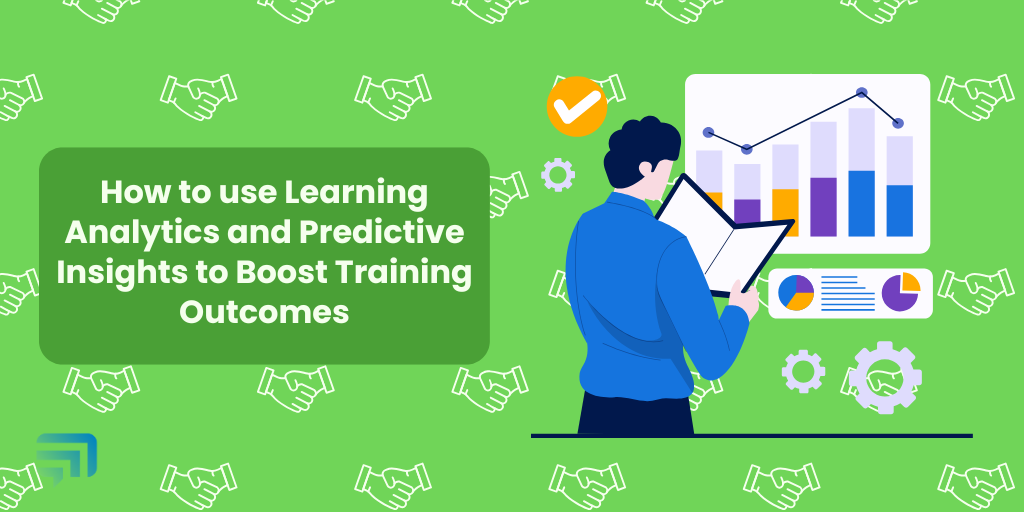Share this
How to Use DISC in Sales: Identify Buyer Personalities & Close Deals
by Tee Dang Mankiewicz on Feb 17, 2025 4:58:11 PM
Sales success isn’t just about having the best pitch- it’s about understanding your buyer. The DISC personality model is a powerful tool that helps sales reps tailor their approach based on a buyer’s personality type. By recognizing verbal and visual cues, sales professionals can quickly identify a prospect’s decision-making style and adapt their sales strategy to close more deals.
In this comprehensive guide, we’ll break down how to use DISC in sales, identify buyer personality types, and apply proven sales psychology techniques. Plus, we’ll explore why microlearning is the best way to train sales reps for real-time sales conversations.
The ability to quickly assess a buyer’s personality allows sales reps to tailor their pitch, establish trust, and close more deals.
But learning sales psychology isn’t enough. Sales reps often forget their training over time, leading to inconsistent performance. The solution? Sales training via SMS, which delivers bite-sized lessons that reinforce knowledge and ensure long-term retention.
What You’ll Learn in This Guide:
- How to read buyer personality in sales
- How to use DISC in sales for better communication
- Common buyer personality types and how to sell to them
- The Ebbinghaus Forgetting Curve and why traditional sales training fails
- How microlearning via SMS improves sales training retention
Let’s dive in.
What is DISC and Why Does It Matter in Sales?
The DISC model categorizes personalities into four main types:
- Dominance (D): Assertive, goal-driven, and decisive.
- Influence (I): Social, enthusiastic, and persuasive.
- Steadiness (S): Loyal, methodical, and risk-averse.
- Conscientiousness (C): Analytical, detail-oriented, and logical.
Each personality type processes information differently, making it crucial for sales reps to tailor their approach. Understanding DISC allows sales professionals to:
- Adjust their pitch based on the buyer’s decision-making style.
- Build instant rapport by speaking the buyer’s “language.”
- Avoid common mistakes that turn buyers away.
By leveraging DISC, sales reps can shorten sales cycles, improve engagement, and close more deals with precision.
How to Read Buyer Personality in Sales
Every buyer has a unique personality that influences their purchasing decisions. By identifying different personality types, sales professionals can tailor their approach, build stronger relationships, and increase the likelihood of a sale.
One of the best frameworks for this is DISC personality profiling.
Why Buyer Personality Matters in Sales
Sales is not just about presenting a product or service—it’s about understanding the customer’s needs and addressing their concerns. A deeper understanding of buyer personality allows sales professionals to:
- Personalize communication
- Build trust and rapport
- Address objections effectively
- Close deals more efficiently
Sales success hinges discovering practical ways to apply DISC in sales conversations, knowing how to adapt communication and persuasion techniques based on the personality of the buyer.
How to Identify Buyer Personality Types Using DISC
The DISC personality model categorizes people into four primary behavioral styles:
Dominant (D-Type) - The Driver Buyer
Traits: Results-driven, competitive, and direct.
Best Sales Approach: Be concise, focus on bottom-line results, and use data.
Mistakes to Avoid: Over-explaining, too much small talk.
D-types want to know how your product will help them win. Keep your pitch brief, fact-based, and outcome-focused.
Example: Instead of saying, “Our solution has a variety of features that help streamline operations” say, “Our solution will cut your costs by 20% and increase efficiency within 30 days.”
Influential(I-Type) - The Expressive Buyer
Traits: Outgoing, optimistic, and relationship-focused.
Best Sales Approach: Use storytelling, enthusiasm, and social proof.
Mistakes to Avoid: Overloading them with details, being too rigid.
I-types respond well to excitement and connection. They love hearing about other success stories and need to feel emotionally engaged in the sales process.
Example: “One of our clients, Sarah, boosted her sales by 40% in three months using this method. Imagine what that could do for your team!”
Steadiness (S-Type) - The Amiable Buyer
- Traits: Relationship-driven, trust-focused, values, loyal, patient, and methodical.
- Sales Approach: Build a personal connection, show empathy,provide testimonials, and avoid pressure.
- Mistakes to Avoid: Creating urgency, being too aggressive.
S-types need reassurance and time to make decisions. They value consistency and relationships, so focus on long-term benefits.
Example: "Our long-standing clients appreciate the stability and support we offer—many have been with us for over five years."
Conscientiousness (C- Type) - The Analytical Buyer
- Traits: Logical, detail-oriented, data-driven
- Sales Approach: Provide facts, case studies, logical reasoning and statistics
- Mistakes to Avoid: Being overly emotional, lacking proof.
C-types scrutinize every detail before making a decision. They appreciate facts, case studies, and well-structured presentations.
Example: "Here’s a case study showing how our product reduced costs by 18% while improving productivity by 22%."
These personality types enables sales professionals to customize their pitch and communication strategy accordingly.
How to Read Buyer Personality in Sales
Identifying a buyer’s personality type requires careful observation and strategic questioning. Here’s how sales professionals can read buyer personalities effectively:
1. Observe Their Communication Style
- Direct and to the point? Likely a Dominant.
- Chatty and enthusiastic? Likely an Influencer.
- Warm and relationship-focused? Likely a Steady type.
- Logical and questioning? Likely a Conscientious.
2. Listen to Their Concerns and Questions
- Dominant buyers ask about ROI and efficiency.
- Influencer buyers focus on vision and possibilities.
- Steady buyers inquire about customer experience.
- Conscientious buyers ask for data and proof.
3. Pay Attention to Their Decision-Making Speed
- Fast decision-makers tend to be Dominants or Influencers.
- Slow, cautious buyers are often Steady or Conscientious.
4. Ask the Right Questions
Engage buyers with targeted questions:
- “What’s the most important factor for you in making this decision?” (Reveals priority focus)
- “How do you typically evaluate new products or services?” (Reveals decision-making process)
- “What concerns do you have about this purchase?” (Identifies objections upfront)
5. Adapt Your Sales Approach Based on DISC Personality
Once you have identified a buyer's personality, adjust your approach:
- Dominants: Be efficient, avoid small talk, and focus on results.
- Influencers: Engage with excitement and align with their vision.
- Steady: Build rapport and focus on trust and service.
- Conscientious: Provide data, logic, and detailed explanations.
How Sales Reps Can Apply DISC in Real-Time Conversations
Step 1: Identify the Buyer’s Personality in 60 Seconds
Use verbal and visual cues to categorize the buyer into D, I, S, or C.
Step 2: Adapt Your Approach on the Fly
Adjust your tone, word choice, and pitch to match their personality.
Step 3: Use Role-Playing to Sharpen Your Skills
Sales reps can practice adapting to different buyer types through role-playing exercises.
For example, if a sales rep encounters a D-Type buyer, they should practice getting straight to the point and focusing on results.
Sales Psychology Techniques for Adapting to Buyer Types
✅ Mirroring & Matching: Subtly reflect the buyer’s body language and tone to build rapport.
✅ Leveraging Urgency for D-Types: Use scarcity and competitive positioning to drive action.
✅ Storytelling for I-Types: Share engaging customer success stories.
✅ Security for S-Types: Reassure them with testimonials and long-term benefits.
✅ Logic for C-Types: Provide detailed case studies and data-driven insights.

The Ebbinghaus Forgetting Curve: Why Sales Training Fails
Even the best sales training programs fall short if reps don’t retain what they learn. This is explained by the Ebbinghaus Forgetting Curve, which shows how quickly people forget new information.
What Is the Ebbinghaus Forgetting Curve?
German psychologist Hermann Ebbinghaus discovered that people forget:
📉 70% of new information within 24 hours
📉 90% within a week (unless reinforced)
Why Traditional Sales Training Doesn’t Work
❌ One-time workshops – Information overload leads to rapid forgetting
❌ Lengthy online courses – Too much content at once results in poor retention
❌ Lack of reinforcement – Without ongoing training, knowledge fades quickly
Solution: Sales reps need continuous, bite-sized training to reinforce learning.
How Sales Training via SMS Solves the Forgetting Curve
Microlearning—a training method that delivers small, focused lessons—helps combat the Forgetting Curve by reinforcing knowledge over time. When combined with SMS-based training, it becomes even more effective.
How SMS-Based Sales Training Works:
📩 Short, digestible lessons (2-3 minutes long) sent via SMS
⏳ Spaced repetition – Lessons are sent over time to reinforce learning
✅ Quick quizzes – Reps test their knowledge with interactive SMS questions
📊 Performance tracking – Managers monitor progress and identify knowledge gaps
This approach allows sales reps to retain and apply what they’ve learned about buyer personality and DISC strategies.
Benefits of Sales Training via SMS
📈 Higher Retention Rates – Bite-sized learning combats the Forgetting Curve
🚀 No Disruptions – Reps train without stepping away from selling
💰 Cost-Effective – No need for expensive workshops or travel
📊 Trackable Results – Real-time performance insights for managers
📱 Convenience – Reps learn anytime, anywhere
Combining Buyer Personality Insights with SMS Training
Imagine this scenario:
- A sales rep learns about DISC personality types in a training session.
- Over the next few weeks, they receive daily SMS reminders:
“Selling to a D-type buyer? Keep your pitch direct and results-focused.” - They take a quick SMS quiz to reinforce their knowledge.
- When meeting a new prospect, they instantly recognize their DISC type and adjust their approach.
- Result: A more personalized pitch, stronger engagement, and a higher chance of closing the deal.
With SMS-based microlearning, sales reps don’t just learn sales psychology—they apply it consistently in the field.
Why Microlearning is the Best Way to Train Sales Reps on DISC
Traditional sales training often overwhelms reps with too much information at once, leading to poor retention. Microlearning solves this by delivering bite-sized lessons that reinforce key concepts daily.
Benefits of Microlearning in Sales Training:
✅ Short, focused lessons improve retention.
✅ Daily reinforcement keeps skills sharp.
✅ SMS-based training allows reps to learn on the go.
Enhancing Sales Training via SMS
While understanding buyer personality is key, continuous training helps sales professionals refine their skills. One of the most efficient ways to conduct ongoing training is through sales training via SMS.
1. Why SMS is a Powerful Sales Training Tool
SMS is an effective training tool because it offers:
- Instant accessibility for sales teams on the go
- High open rates (98%) compared to emails
- Bite-sized training content for easy learning
- Real-time engagement and feedback
2. How to Implement DISC Sales Training via SMS
Here are practical ways to integrate SMS into sales training:
a) Daily Sales Tips and Insights
Send short, actionable sales tips via SMS to keep the team motivated and informed.
Example: "Sales Tip: When dealing with Conscientious buyers, focus on facts and figures. Show them data-driven proof!"
b) Interactive SMS Quizzes
Reinforce learning with quizzes.
Example: "Which DISC type prefers storytelling and brand vision? A) Dominant B) Influencer C) Steady D) Conscientious. Reply with your answer!"
c) Scenario-Based Training
Use SMS to present real-world sales scenarios and ask sales reps how they would respond.
Example: "A potential buyer asks, 'Why should I choose your product over others?' How would you respond? Reply with your best pitch!"
d) Quick Sales Challenges
Engage sales teams with fun challenges.
Example: "Today's challenge: Identify a customer’s DISC personality type within 2 minutes and adjust your pitch accordingly!"
e) Product Updates and Knowledge Checks
Keep sales teams updated on product changes via SMS.
Example: "New product update: Feature X now includes [enhancement]. Key benefit: [benefit]. Make sure to mention this in your next pitch!"
f) Motivational Messages
Sales teams thrive on motivation. Send daily encouragement via SMS.
Example: "Keep pushing forward! Every 'no' brings you closer to a 'yes'. Stay focused and win that deal!"
3. Measuring the Effectiveness of SMS Sales Training
To ensure sales training via SMS is effective, track:
- Engagement rates (response to quizzes and challenges)
- Knowledge retention (quiz results and feedback)
- Sales performance improvement (conversion rates pre- and post-training)
- Team feedback (surveys on SMS training effectiveness)
How Brasstacks Simplifies Sales Training via SMS
Brasstacks is a microlearning LMS web app that allows companies to:
✅ Choose from ready-made sales training courses or create custom lessons
✅ Automate SMS delivery to reinforce sales techniques
✅ Track rep performance and ensure knowledge retention
Why Brasstacks?
- Designed for busy sales teams – No lengthy modules, just quick, actionable lessons
- Proven to improve retention – Reinforces learning at the perfect intervals
- Customizable – Adapt training content to your company’s needs
If your team struggles with sales retention and application, Brasstacks can help.
Final Thoughts & Next Steps
Mastering DISC in sales is the key to understanding buyer behavior and increasing close rates. When sales reps can quickly assess and adapt to different personality types, they create stronger connections and drive better results.
By combining buyer personality insights, DISC strategies, and SMS-based training, you can equip your sales team for success—and ensure that their knowledge sticks.
📌Want to Learn More?"
🔹 Microlearning for Sales: Why Short Lessons Drive Big Results
🔹 Best Sales Enablement Strategies to Improve Performance
Want to master DISC and close more deals? 👉 Enroll in our DISC Sales Training Microlearning SMS course


10 Ways to Get Clients for Home Care Business

10 Best LMS for Caregiving Agencies in 2025

How to use Learning Analytics and Predictive Insights to Boost Training Outcomes
Share this
- Employee training (10)
- LMS (9)
- Manager training (6)
- Microlearning (6)
- Sales Training (6)
- Company culture (5)
- Learning management system (5)
- Employee engagement (4)
- Productivity (3)
- AI prompts (2)
- Compliance training (2)
- Hiring (2)
- Communications (1)
- Guides (1)
- Onboarding (1)
- Skills gap analysis (1)
- Toolkits (1)

